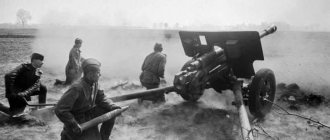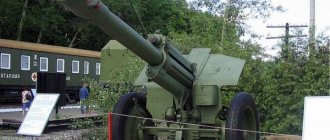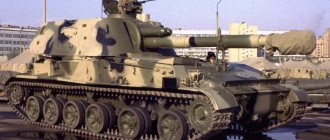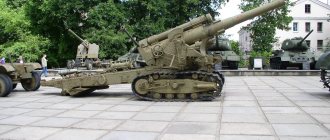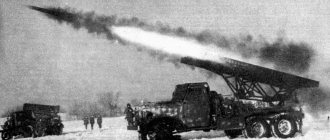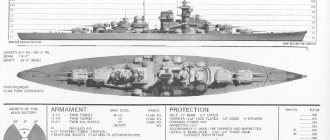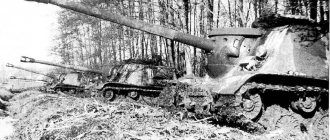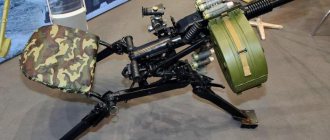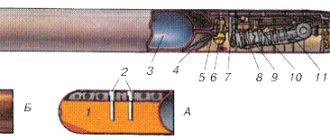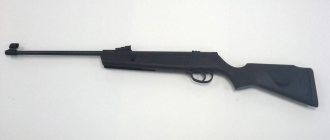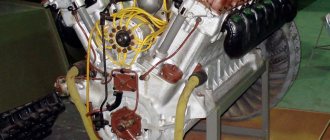Through the eyes of front-line soldiers: 122-mm howitzer M-30
For a long time, in service with the Red Army, 122-mm field howitzers were represented by artillery systems of the “tsarist regime”, that is, guns and “Schneider”. Despite the modernization, by the 1930s these guns were already considered obsolete, and the leadership of the Main Artillery Directorate of the Red Army set the task of creating a new divisional howitzer. This was not the first attempt that was successful, but still in 1938, developed under the leadership of F. F. Petrov in the design bureau of the Motovilikha plant, the howitzer entered its first tests, the following year it was put into service, and in 1940 its mass production began. How did his calculations evaluate the new weapon?
A good choice and its disadvantages
The standard, and even more so, the actual number of 122-mm howitzers in the spacecraft rifle division, depending on the losses of materiel and production, changed throughout the Great Patriotic War. By June 22, there were 32 of them; after losses at the beginning of the war, the number of 122-mm howitzers was reduced to 8, and 152-mm guns were generally removed from the divisional level and discontinued. Thus, it was the 122-mm M-30 howitzers that became the largest-caliber guns of the Soviet divisional artillery and remained so until the victorious May 1945.
Battery of M-30 howitzers on the streets of Berlin
We can confidently say: this happened precisely because the created F.F. Petrov's howitzer turned out to be a very successful artillery system. Both during the war and during surveys conducted after the victory, the majority of front-line soldiers noted its high combat and operational qualities. Many reports that were written indicated that the M-30 is one of the best examples of artillery pieces.
In particular, it was stated that the system gives very little dispersion even when firing at the maximum distance - problems began only when the barrel was heavily worn or when firing abnormal shots from a 122-mm howitzer of the 1910/1930 model. The good destructive power of the 122-mm high-explosive fragmentation projectile was also noted. In this sense, the pre-war decision of the leadership of the GAU KA to choose a 122-mm caliber divisional howitzer, rather than switch to smaller artillery systems, even if they promised greater mobility, turned out to be completely justified.
The documents separately indicated that shells manufactured in wartime and filled “not with TNT, but with other explosives”
gave the worst effect when firing high-explosive and delayed action.
In addition, based on war experience, they were asked to add shrapnel to the ammunition load and increase the number of fragmentation-smoke shells, since “the need for the latter in battle was greater than the supply
. The artillerymen also wanted to have an incendiary 122-mm projectile.
However, with all the praise for the 122-mm howitzer, the artillerymen who drove it from Brest to Moscow and back to Berlin, often manually, also found a lot of words about the shortcomings of the system. A significant part of the comments related to mechanized traction and the consequences of switching to it from horse-drawn traction.
The appearance of powerful Lend-Lease trucks in the USSR significantly increased the capabilities of Soviet artillery. The documents specifically stated:
“As a means of traction for a howitzer, auto tractors have fully justified themselves, in particular, the Studebaker vehicle, which has a large load capacity (provides lifting of one ammunition load), maneuverability and speed ...
The best type of traction for this system is the American Studebaker tractor vehicle.” .
For this reason, they even suggested removing the charging boxes, since the transported supply of shells was still in the back of the truck.
The crew of an M-30 howitzer fires at enemy positions on the street of Budapest
However, to fully realize the capabilities of overseas technology, Soviet howitzers clearly needed modifications to the wheels and suspension mechanism - at high speeds, the springs failed, and the rubber of the wheel slopes flew off. Also, the springs often broke when trying to transport the howitzer over uneven terrain. In addition, even when the spring did not break, but simply sagged, the pin of the suspension mechanism got stuck in the hole of the combat axle, after which it was extremely difficult to get in and out. In another report, the list of failures during the transport of guns included frame rods, limber bearings, Belleville springs under the upper machine, limber booms and wheel brakes. In addition, it was also noted that when the frames are extended, the stoppers do not turn on automatically as they should, and the tie screw for the “travelling” fastening delays the extension of the frames.
To correct these shortcomings, it was proposed to increase the quality of the spring material or at least the number of sheets, as well as to replace hydraulic shock absorbers “like those used in imported cars.”
. It was recommended to replace the front end bearings with bearings from the ZiS-3 gun.
A smoke break on a howitzer stand on the street of defeated Berlin
There were also complaints about malfunctions that occurred during shooting. Some of them clearly related to the peculiarities of wartime production. For example, it has been noted that replacement packings and collars are of very poor quality, resulting in large fluid leaks. The inertia fuse leaf springs often broke. During shooting, a fluid leak was observed through the rear cover of the recoil brake cylinder. Cracks appeared at the trunk part of the frame at the welding points.
Some of the comments can be attributed directly to design flaws.
“A weak recoil brake spring and an imperfect design of the floating piston of the compensators lead to the fact that the piston, having moved away from the normal position due to the heating of the liquid, does not return when it cools. The extractor sockets quickly wear out, as a result of which automatic extraction of the cartridge case does not occur, which delays the production of the next shot ...
Too often the open part of the bronze womb of the rotary mechanism becomes dirty. It is necessary to install some kind of safety casing.”
Extraction problems were also mentioned when discussing the cases. If there were no questions about brass sleeves, then the iron sleeve quickly rusted, began to leak moisture and, as
.
The crew of the M-30 howitzer fights on the streets of Vienna
One of the reports noted the insufficient thickness of the shield protecting the crew from fragments.
The question of the need to introduce a muzzle brake for the gun turned out to be quite difficult. Some were in favor, hoping for less wear on howitzer parts. In other reports, on the contrary, it was believed that the gun did not need this part, since it would greatly unmask the position when firing, increase the impact on the crew, and so on.
Problems often arose not only due to the imperfection of guns and shells, but also, on the contrary, due to their high performance characteristics, unsuccessfully combined with low training of personnel. For example, in 1942, at the front, 122-mm howitzers of the 1938 model became more frequently exposed to shell explosions. An investigation conducted by the GAU revealed that this occurs when using GVMZ fuses (instant and delayed action head fuse), with explosions occurring at the moment the head of the grenade exits or when it encounters a foreign object in the barrel bore. Often the fuse was triggered by camouflage branches; in the 837th howitzer artillery regiment of the Volkhov Front and the 89th artillery regiment of the Southwestern Front, muzzle covers were not removed from the guns before firing, etc. At the same time, the GAU instructions especially emphasized that “of all the fuses in service, the GVMZ fuse is the most sensitive”
, and the troops were required to thoroughly clear the shot trajectory of markings.
Position of the M-30 howitzer near Budapest
However, complaints that the GVMZ fuse was dangerous to handle and transport due to a broken membrane still continued to be received.
Anti-tank 122 mm
To conclude the story about the 122-mm M-30 howitzer, it is necessary to say about the use of this weapon as an anti-tank gun. In general, the idea of using a 122-mm howitzer for the needs of anti-tank defense, although it was practiced throughout the war, the effectiveness of the weapon with separate loading and aiming, as well as a low initial projectile velocity, raised reasonable doubts among the personnel: “The possibility of a second shot in case of a miss.” is almost completely excluded, because the tank has greater maneuverability and rate of fire than this weapon"
.
It is interesting that in one report it was written: “The direct shot of this system against royal-type tanks is not satisfactory (small direct shot, low initial speed) .
Judging by the red pencil highlighting in the text, this remark aroused the keen interest of the inspection officer from the GAU. Considering that the document was drawn up in the 4th Artillery Breakthrough Corps of the RGK, perhaps he was interested in when exactly the crews of the 122-mm howitzers of this formation could gain experience in fighting “royal-type” tanks.
The crew of the M-30 howitzer fires at the enemy on the approaches to Vienna
However, “cases in war are different,” and the power of the 122-mm projectile was quite enough to cause problems for any German tank during the initial period of the war. In the second half of the war, howitzers received an even more effective weapon - cumulative shells. However, by this time the Red Army also had enough specialized anti-tank systems, so few were able to use these shells against armored vehicles. But many reports recorded “good action on buildings”
.
The author found the most complete report on the use of 122-mm cumulative shells against tanks in the report of the 77th howitzer artillery brigade. On August 30, 1944, the 305th Howitzer Artillery Regiment fought with German tanks. On October 4 of the same year, at the Narev bridgehead, the role of anti-tank forces fell to the crews of the 229th Guards Howitzer Artillery Regiment, which reported 11 destroyed enemy tanks.
The brigade headquarters report stated that the best firing range for “armor-piercing” shells was 400–600 meters. At the same time, at a range of over 600 meters, the frontal and turret armor of the Tigers did not penetrate, since the shells ricocheted. However, it was stipulated that if it hits the turret, it jams and the tank loses its combat effectiveness. The Tiger's side armor was hit by shells at a distance of up to 800 meters, and from 1000 to 1200 meters it was allowed to shoot at tracks and weapons. But the 122-mm cumulative projectile penetrated the armor of a medium tank at a distance of up to 800–900 meters, and about armored personnel carriers in the report they wrote this: “Fails when fired at any range.”
.
The crew of the M-30 howitzer prepares the weapon for battle
However, in the collection of tasks for inventors and innovators for 1945, there was a desire to develop a new fuse for 76-mm and 122-mm cumulative projectiles, with greater sensitivity - for trouble-free operation when encountering any ground.
The overall result of surveys of artillerymen regarding the 122-mm M-30 howitzer was quite clear: “This system must be left in service with the artillery of the Red Army, because it justified itself with its fighting qualities during the Patriotic War"
.
Description of design
122 mm gun mod. 1931 in the Artillery Museum, St. Petersburg. Characteristic recoil devices
Wheel travel of the same gun
The gun had a design that was quite modern for its time, with a carriage with sliding frames and a sprung wheel travel. The gun barrel consisted of a pipe, a casing and a screw-on breech. All guns produced since 1936 had barrels with a free tube, earlier guns had bonded barrels. The bolt is piston, the device is similar to the bolt of a 152-mm howitzer mod. 1910/30 (since 1937, some changes have been made to the shutter design). The recoil brake is hydraulic, the knurl is hydropneumatic. Recoil devices are located in a trough-shaped cradle under the barrel. The length of the rollback is variable; during the rollback, the recoil devices remained motionless
.
The lifting mechanism is combined with a spring-type balancing mechanism. Screw type rotary mechanism. The beds are sliding, riveted. The gun had plate-type suspension. There was no automatic shutdown of the suspension when opening the beds. The wheels are metal, with 10 spokes and rubber weights (some later guns had metal wheels with dual pneumatic tires from the carriage of the ML-20 howitzer-gun. To protect the crew, the gun had a shield. The front was sprung, from the experimental 152-mm howitzer-gun ML-15 .]
Initially, the gun was planned to be transported both separately (the barrel separately on a special cart, the carriage separately) and inseparably. In 1936, based on the test results, it was decided to abandon the separate carriage and move the gun only inseparably, using mechanical traction. The gun was towed by S-2 “Stalinets-2”, “Comintern” tractors, and since 1943 by Y-12 tractors
.
Characteristics and properties of ammunition
The gun had a separate case loading; it was supplied with four propellant charges - full, No. 1, No. 2 and No. 3, placed in a metal case 785 mm long. Charge No. 1 was the main beam, charge No. 2 the main beam and beam No. 3, charge No. 3 the main beam, beam No. 3 and one equilibrium beam, and the total charge the main beam, beam No. 3 and two equilibrium beams. Both special cannon and howitzer shells were used for firing, but the latter, due to their lower strength, could not be fired with a full charge; It was also strictly prohibited to fire cast iron howitzer shells 53-OF-460A and 53-OF-462A, since they split in the barrel when fired.[11]
| Ammunition nomenclature ][11] | |||||
| Type | GAU index | Projectile weight, kg | Explosive weight, kg | Initial speed, m/s | Table range, m |
| Caliber armor-piercing shells | |||||
| Armor-piercing sharp-headed (ARNE) | 53-BR-471 | 25, 0 | 0, 156 | 800 | 4000 |
| Armor-piercing blunt-headed (ARNEVS), from the beginning of 1945 | 53-BR-471B | 25, 0 | ? | 800 | 4000 |
| High-explosive fragmentation shells | |||||
| Cannon with screw head | 53-OF-471N | 25, 0 | 3, 8 | 800 | 19 800 |
| Gun | 53-OF-471 | 25, 0 | 3, 6 | 800 | 19 800 |
| Howitzer | 53-OF-462 | 21, 7 | 3, 67 | 765 (charge no. 1) | 16 600 |
| Gun | 53-OF-471V | ? | ? | ? | ? |
| Gun | 53-OF-472 | ? | ? | ? | ? |
| Concrete-piercing shells | |||||
| Gun | 53-G-471 | 25, 0 | 2, 2 | 800 | 20 400 |
| Chemical shells | |||||
| Chemical fragmentation cannon | 53-OX-471 | 25, 0 | ? | 800 | 19 800 |
| Chemical howitzer | 53-X-462 | 21, 8 | ? | 705 (charge No. 2) | 19 800 |
| Armor penetration table for 122 mm gun mod. 1931 (A-19 )] | ||
| Blunt-headed caliber armor-piercing projectile 53-BR-471B | ||
| Range, m | At a meeting angle of 60°, mm | At a meeting angle of 90°, mm |
| 500 | 125 | 155 |
| 1000 | 120 | 145 |
| 1500 | 110 | 135 |
| 2000 | 100 | 125 |
| 3000 | 85 | 105 |
| Pointed-head caliber armor-piercing projectile 53-BR-471 | ||
| Range, m | At a meeting angle of 60°, mm | At a meeting angle of 90°, mm |
| 500 | 120 | 150 |
| 1000 | 105 | 130 |
| 1500 | 95 | 115 |
| 2000 | 80 | 100 |
| 3000 | 65 | 75 |
| The given data refers to the Soviet method for calculating penetration power. It should be remembered that armor penetration indicators can vary noticeably when using different batches of shells and different armor manufacturing technologies, as well as different calculation methods. | ||
Combat use
For the first time, A-19s (it is unclear what modification) took part in small numbers in the battles on the Khalkhin Gol River, and guns of this type did not suffer losses.] Guns of this type also took part in the Soviet-Finnish war of 1939-1940. On March 1, 1940, there were 127 A-19 guns of both modifications at the front; losses during the war amounted to 3 guns. As of June 1941, according to various sources, there were 1300] or 1257 (1236 in the army and 21 in the navy)] such guns. There were 583 122-mm guns in the western districts.] In 1941, the losses of 122-mm guns amounted to at least 900 guns, many of which were mod. 1931] The remaining guns were used until the end of the war. The main targets of 122-mm guns were concentrations of manpower and equipment, columns on the march, artillery batteries, field warehouses, headquarters and communications centers, and well-fortified defensive positions. In case of urgent need (for example, in the Battle of Kursk), 122-mm guns were used to fight enemy heavy tanks. Although the ballistics of the guns allowed them to successfully fight armored vehicles, their use in this role was rather a gesture of despair - as an anti-tank gun, the A-19 had large dimensions, high cost, low vertical and horizontal aiming speeds
.
